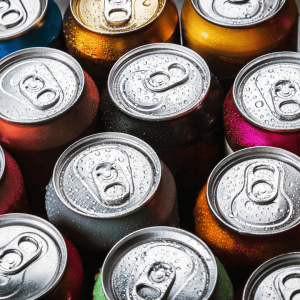The Power Of Protein: Understanding Its Essential Roles In The Body
Proteins: they’re in every cell, every tissue, every organism. They’re the workhorse macromolecule of life, involved in nearly every function of every living thing. But what is it that makes them so vital? To quote Houston (2006), “Everything we do, everything we are, and everything we become depend on the action of thousands of different proteins.” This statement underscores the profound significance of proteins in our lives, both at a microscopic level and in terms of our overall health, fitness, and well-being.
In this blog post, we aim to delve into the fascinating world of proteins and explore their many roles in the body. From catalyzing chemical reactions to fighting off invaders, proteins serve functions as diverse as the forms they take. So, let’s embark on this journey to understand the unparalleled versatility of proteins.
What is Protein?
What exactly is a protein? It may be a term we hear frequently, but its essence is often overlooked in our daily lives. Proteins are large, complex molecules made up of amino acids, which are often referred to as the building blocks of life. Each protein is unique, consisting of a specific sequence of amino acids that determine its structure and function. Proteins are quite literally everywhere, present in each cell of our bodies, carrying out a wide array of tasks necessary for life.
In terms of dietary sources, proteins can be found in both animal and plant-based foods. Animal sources of protein include meat, poultry, fish, eggs, and dairy products. Plant-based proteins are found in foods like beans, legumes, nuts, seeds, and whole grains. It’s also crucial to note that not all dietary proteins are created equal. They differ in their amino acid content and digestibility, hence the importance of a balanced diet with a variety of protein sources.
As we delve deeper into this topic, we’ll explore the many roles proteins play in our bodies, painting a fuller picture of why this nutrient is so vital to our health and well-being.

Catalytic Role of Proteins
Stepping into the realm of biochemistry, one of the significant roles proteins play is that they function as enzymes, the unsung heroes of nearly every biochemical process in our bodies. Enzymes are biological catalysts that speed up chemical reactions without being used up or altered in the process. For every metabolic reaction—whether it’s breaking down food for energy, repairing body tissues, or fighting off infections—there’s a protein enzyme working behind the scenes to make it happen quickly and efficiently.
Take, for instance, the enzyme glycogen phosphorylase. This protein plays a crucial role in fueling our muscles during exercise by breaking down glycogen—a storage form of glucose in our bodies—into glucose-1-phosphate, which is further processed to provide ATP, the energy currency of the cell. Without glycogen phosphorylase and other similar enzymes, the metabolic reactions required for life as we know it would occur at a snail’s pace.
The regulation of these enzymes is an essential aspect of exercise and sports metabolism. The body adjusts the activity of enzymes in response to various conditions like energy demand, hormone levels, and dietary intake. This adaptability allows us to meet the changing energy needs of our bodies, such as during periods of rest versus during intensive exercise.
As we move further into our exploration of proteins, we’ll see that their catalytic function is just one of the many ways they contribute to the smooth functioning of our bodies.
Proteins in Transport and Storage:
If our bodies were a bustling city, proteins would be the diligent transport and storage workers, ensuring that everything is in the right place at the right time. Proteins are integral to the transport of a myriad of substances within our cells, across our cells’ membranes, and throughout our bodies.
Let’s take a deep breath and consider the role of haemoglobin, a protein that resides within our red blood cells. This protein has a specialized role in transporting oxygen from our lungs to the rest of our body. Oxygen molecules bind to the iron-containing heme groups in haemoglobin, hitching a ride through our circulatory system until they reach our body’s tissues.
Once the oxygen arrives at our muscles, it is handed off to another protein, myoglobin. Myoglobin acts as a storage unit for oxygen within muscle cells, holding onto the oxygen until it is needed for metabolic reactions that generate energy.
Additionally, proteins embedded in cell membranes function as channels or pumps that regulate the flow of important molecules into and out of cells. These transport proteins play crucial roles in maintaining cellular homeostasis and facilitating communication between cells.
Without these dedicated transport and storage proteins, our bodies’ ability to move and store necessary substances efficiently would be compromised. As we continue our exploration of the roles proteins play, it becomes clear that they are key players in maintaining our bodies’ complex logistical operations.
Hormonal Role of Proteins
From orchestrating bodily functions to communicating vital messages, proteins don a myriad of roles, one of which is the role of hormones. Hormones are essentially chemical messengers, secreted by cells in the endocrine system, and they regulate the activity of cells in other parts of the body.
For instance, take insulin, a protein hormone released from the pancreas when we consume a meal, particularly one high in carbohydrates. This results in an increase in blood sugar levels or glucose, and insulin steps in to manage this surge. It binds to a receptor protein present in the plasma membrane of other cells, most notably skeletal muscle cells. This union initiates an intracellular signaling cascade that encourages the cell to increase its uptake of glucose, effectively lowering the blood glucose concentration back to baseline values.
But what happens when this intricate process goes awry? Conditions like diabetes come into play. Patients with diabetes struggle to maintain blood glucose levels within basal levels, leading to a state known as hyperglycemia, characterized by high blood glucose levels. Left untreated, this can lead to serious complications, such as a diabetic coma, and even death. To manage this, daily insulin injections can help overcome the defects in insulin secretion or action associated with type 1 and type 2 diabetes, respectively.
This exploration into the hormone-like functions of proteins elucidates just how crucial they are in maintaining the body’s delicate biochemical balance. As we delve deeper, we’ll encounter more versatile roles that proteins perform.
Proteins in Signalling
Taking the spotlight once more in a very crucial role, proteins excel as cellular communicators. Intricate networks of signals are constantly being exchanged both between cells (cell-to-cell communication) and within cells themselves (intracellular communication). It’s a continuous conversation, and proteins are key players in making sure the dialogue continues.
Take the insulin signaling cascade for instance. When insulin, secreted from the pancreas, binds to the insulin receptor in the cell membrane of the muscle cell, a chain of events is set in motion. This binding initiates an intracellular signaling cascade that ultimately leads to increased glucose uptake.
How does this intricate signaling work? It’s through a series of phosphorylation reactions. Proteins known as kinases phosphorylate a target protein, which in turn activates it. This activated protein can then phosphorylate another protein and so forth until the appropriate cellular response has been achieved. In this way, proteins enable a cellular response to an external trigger – a perfect example of intracellular communication.
But the signaling capabilities of proteins extend beyond internal cellular processes. They also come into play in response to external factors, such as exercise. When we perform repeated bouts of exercise, our muscle cells respond to both extracellular and intracellular signals. Over time, this activates the relevant signaling cascade to help our muscles become more efficient at dealing with the metabolic stress induced by exercise.
A simplified way to imagine proteins in their signaling role is to envision them in a game of dominoes. When the signal is initiated (the first domino is toppled), it leads to a sequence of events (toppling of the domino chain) until the necessary response has been achieved. It’s a sophisticated and intricate game, and proteins play it masterfully.
Contractile Role of Proteins
The music of movement in our bodies is orchestrated largely by the contractile role of certain proteins. The instruments in this symphony are proteins called actin and myosin. Often referred to as ‘myofibrillar’ proteins due to their location in the myofibrils of muscle cells, they serve as the driving forces behind muscle contraction.
Actin and myosin are sometimes characterized as the ‘motor proteins’ of our bodies, and with good reason. Their primary function is to convert the chemical energy stored within ATP (adenosine triphosphate) into mechanical work. This is the very essence of muscle contraction – a complex process that propels us through our daily activities, from lifting a cup of coffee to running a marathon.
The intricate dance between actin and myosin forms the molecular basis for muscle contraction. Here’s how it works: myosin heads attach to actin filaments and pull them closer together, shortening the muscle fiber and causing contraction. ATP provides the energy for these contractions, powering each ‘stroke’ of the myosin head.
In the grand orchestra of our body’s functions, the rhythm of movement is kept by the contractile proteins. They ensure our muscles contract and relax in harmony with our needs, driving the physical expression of life itself. This understanding of proteins’ contractile role underscores the critical importance of adequate dietary protein to maintain and build muscle tissue, especially for those engaged in regular physical activity or strength training.
Structural Role of Proteins
Like the steel girders that maintain the structural integrity of a skyscraper, proteins play a pivotal role in upholding the structure of cells, tissues, and organs in our bodies. These structural proteins not only provide support but also help in maintaining the shape and arrangement of cells and tissues.
One such vital protein is dystrophin, found in our skeletal muscle cells. Dystrophin’s primary role is to anchor the contractile apparatus (i.e., the myofibrils) to the cell’s plasma membrane. This anchoring process is vital for the proper functioning of muscles. When dystrophin is absent, as in conditions like Duchenne muscular dystrophy, muscle cells weaken and deteriorate over time. This debilitating outcome illustrates the crucial role of structural proteins in our bodies.
Likewise, consider collagen, the most abundant protein in the human body. Collagen forms a scaffold to provide strength and structure to our skin, bones, tendons, and ligaments. It’s what gives our skin its elasticity and our bones their toughness.
And then there’s keratin, the protein that forms the structural basis of hair and nails. Keratin is also found in the outer layer of human skin, providing a barrier against environmental damage.
In summary, structural proteins are the body’s architects and builders. They help construct our bodies and maintain our form, allowing us to move, grow, and interact with our environment.
Immunological Role of Proteins
A suit of armor in medieval times served to protect its wearer from attacks, just as certain proteins in our bodies shield us from harmful invaders. In the context of immunology, proteins, specifically antibodies, stand at the front line in our body’s defense system. They have a vital role in fighting infections and warding off disease.
Antibodies are unique proteins produced by specialized cells of the immune system, known as B cells. These protein warriors are uniquely designed to recognize and neutralize foreign substances or antigens such as bacteria, viruses, and toxins.
The science behind it is fascinating. An antibody recognizes a specific part of the antigen called an epitope, akin to a lock recognizing a particular key. Once the antibody binds to the antigen, it can neutralize the threat directly or mark it for destruction by other immune cells. This targeted response is the foundation of our adaptive immunity, enabling us to fight off specific pathogens effectively.
The importance of these proteins in maintaining health is underscored by the role of vaccinations. When we receive a vaccine, we’re often injected with a harmless piece of the pathogen or its protein. This introduction prompts our bodies to produce antibodies specifically designed to recognize and fight off this pathogen. If we encounter the actual disease later, our immune system is prepared to mount an effective response quickly, thanks to these protein defenders.
This protective role highlights the importance of a balanced diet rich in protein. Adequate protein intake ensures our bodies can consistently manufacture the right supply of antibodies to guard against disease. Thus, proteins, in their immunological role, are the knights of our body’s defense system, providing essential protection against potential invaders.
Regulatory Role of Proteins
While we’ve seen the myriad ways proteins play a part in our health and bodily functions, we’ve not yet delved into their role as the maestros of our body’s symphony, directing and regulating the expression of our very genes.
Proteins, especially transcription factors, are instrumental in controlling gene transcription and translation – the processes responsible for producing new proteins within our cells. These regulatory proteins act like a switchboard, controlling when, where, and how genes are activated and translated into new proteins.
Consider transcription factors, a category of regulatory proteins that bind to specific sequences of DNA. They either promote or block the machinery that transcribes DNA into messenger RNA (mRNA), which serves as the template for creating new proteins. By controlling this initial step of gene expression, transcription factors help dictate which proteins are made, influencing how cells function and communicate.
Once the mRNA is produced, it moves from the nucleus of the cell to the cytoplasm, where the process of translation occurs. Here, another set of proteins, known as ribosomes, read the information encoded in the mRNA and use it to build a chain of amino acids, creating a new protein.
These regulatory processes are vital for all aspects of cellular function and adaptation, including those relevant to sport and exercise metabolism. For example, when you exercise, your muscle cells respond to both external stress (from the exercise itself) and internal signals (such as changes in nutrient availability). These signals can activate regulatory proteins, initiating a cascade of gene transcription and protein synthesis that leads to physiological adaptations. These adaptations, such as increased muscle mass or improved metabolic efficiency, help your muscles become better equipped to handle the demands of exercise.
In essence, proteins in their regulatory role act as the puppet masters, controlling the strings of gene expression and new protein production, shaping our bodies’ responses to various internal and external stimuli, including physical activity. Thus, understanding this regulatory role of proteins helps deepen our appreciation for the intricate and dynamic nature of our bodies.
Conclusion: Revisiting Houston's Quote
As we journeyed through the different roles proteins play in our bodies, the profound words of Houston (2006) resonate even more, “Everything we do, every- thing we are and everything we become depend on the action of thousands of different proteins.”
From catalyzing biochemical reactions, transporting and storing essential substances, to playing crucial roles in hormonal regulation, cell signaling, muscle contraction, maintaining structure, and ensuring our immune responses – proteins indeed impact every aspect of our existence. The diverse functions of proteins underscore their indispensability in our diets, particularly for those leading active lives.
Understanding the roles of proteins in the human body enables us to appreciate their necessity in our diet and the multitude of functions they perform. As we continue to uncover more about these versatile biomolecules, it underscores the complexity and intricacy of our bodies and how factors such as diet, exercise, and overall lifestyle can impact our health.
Through this understanding, we can better strategize our nutrition and exercise plans, optimizing protein intake for our health, fitness goals, and overall well-being.
Our journey with proteins doesn’t stop here. As science continues to unfold, more secrets about these versatile molecules will be revealed, enriching our knowledge, and giving us more tools to lead healthier, more vibrant lives.



